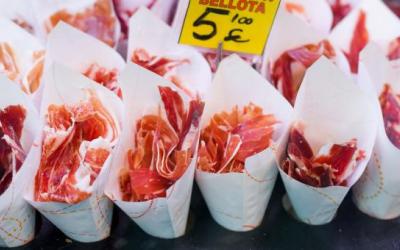New breeds of cows and robotic milking. How milk production is improving in Belarus

July 28, MINSK. Vladimir Timoshenko, First Deputy DIRECTOR General for Research at the Scientific and Practical Center for Animal Husbandry of the National Academy of Sciences, spoke about new breeds of cows, robotic milking and the development of feed for livestock at a press conference, BelTA has learned.
"The main achievement of the institute in the field of breeding is the creation of the Belarusian dairy Holstein breed of cows. Its number is more than 1 million, and 80% of MILK is produced in the republic by these cows. This breed differs from the black-and-white traditionally bred in Belarus in the first place by the fact that it is a specialized dairy breed.The productivity potential of the Holstein breed is estimated at 10-12 thousand kg of milk per lactation, while the limit of the black-and-white breed is 8-9 thousand kg of milk.And most importantly, the Holstein breed is adapted to industrial technologies, according to which produces most of the milk in the country.In addition to this breed, we are also working on the creation of the Belarusian breed of red specialized dairy cattle," said Vladimir Timoshenko.Speaking about the production of milk, the expert paid attention to the process of robotic milking. Thus, on one of the farms included in the National Academy of Sciences, a robotic milking machine "carousel" for 40 places is used, where all milking operations are completely performed by a robot, and a person only controls the process.
The scientist noted that in the process of improving technological methods, it is important to pay attention both to ensuring comfortable conditions for keeping animals, and to reducing human manual labor due to the complex mechanization of such technological processes as feeding, microclimate control, and more. “It is important to improve feeding systems, develop standards, include new nutrients, production waste and local mineral raw materials. In the future, this will significantly affect the quality, cost and competitiveness of the products,” Vladimir Tymoshenko added.
Read together with it:
- The Russian Ministry of Agriculture proposes extending veterinary regulations until 2032.The extension includes regulations for the prevention and eradication of diseases such as bradsot (Clostridium septicum), trichinosis (Trichinella), blackleg (Clostridium chauvoei), and porcine reproductive and respiratory syndrome (PRRS). The proposed changes stipulate the following new deadlines: for bradsot and trichinosis - from March 1, 2......
- The IEA sees a risk of a decline in oil production in Russia due to sanctions.The IEA sees a risk of reduced oil production in RUSSIA due to US sanctions , but maintains its production forecast. According to the IEA, Russian oil exports will remain unchanged.There is a "significant downside risk" to Russia's oil production forecast due to US sanctions, the International Energy Agency (IEA) said in a report.BLOOMBERG . The agency's experts believe that the latest US sanction...
- UniCredit заявил о галактических усилиях из-за санкций против РоссииUniCredit старается не нарушить «более 15 тыс. санкций», а также не «совершать ошибки», которые позволят изъять его активы в России, заявил гендиректор. После начала военной операции банк начал рассматривать возможность ухода Итальянский банк UniCredit прилагает «галактические усилия», пытаясь соблюсти международные санкции в отношении своего российского подразделения. Об этом заявил генеральный д...
- "Коллективы АПК способны решать любые задачи даже в непростых условиях". Назаров о заслугах сельхозпроизводителейЮрий Назаров 13 ноября, Минск. Обеспечение продовольственной безопасности страны - большое достижение трудовых коллективов аграриев, отметил управляющий делами Президента Республики Беларусь Юрий Назаров на торжественной церемонии награждения государственными и иными наградами работников АПК Управления делами Президента Республики Беларусь, передает корреспондент БЕЛТА. Торжественная церемония наг...
- "Белорусские продукты - страновой бренд". В Гродно поздравили работников сельского хозяйства областиФото 13 ноября, Гродно. В Гродно торжественно поздравили с профессиональным праздником работников сельского хозяйства, передает корреспондент БЕЛТА.Этот праздник в нынешнем году для аграрной отрасли региона особенный - впервые в истории в области собрали более 2 млн т зерна с учетом кукурузы. Как отметил в беседе с журналистами председатель комитета по сельскому хозяйству и продовольствию облиспол...
- He crawled to the icon with prayer. The true story of a man who overcame drug addiction.Alexander Ovchinnikov. Topic News. Our project's hero was a drug addict for many years. The thought that this was a dead end never left him, but his addiction proved stronger. One day, when he could no longer walk, he crawled to an icon in prayer. This became his first step toward a new life. Today, he heads a charity center that helps those who have given up hope and are unable to quit ALCOHOL an...



























































